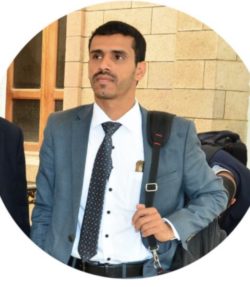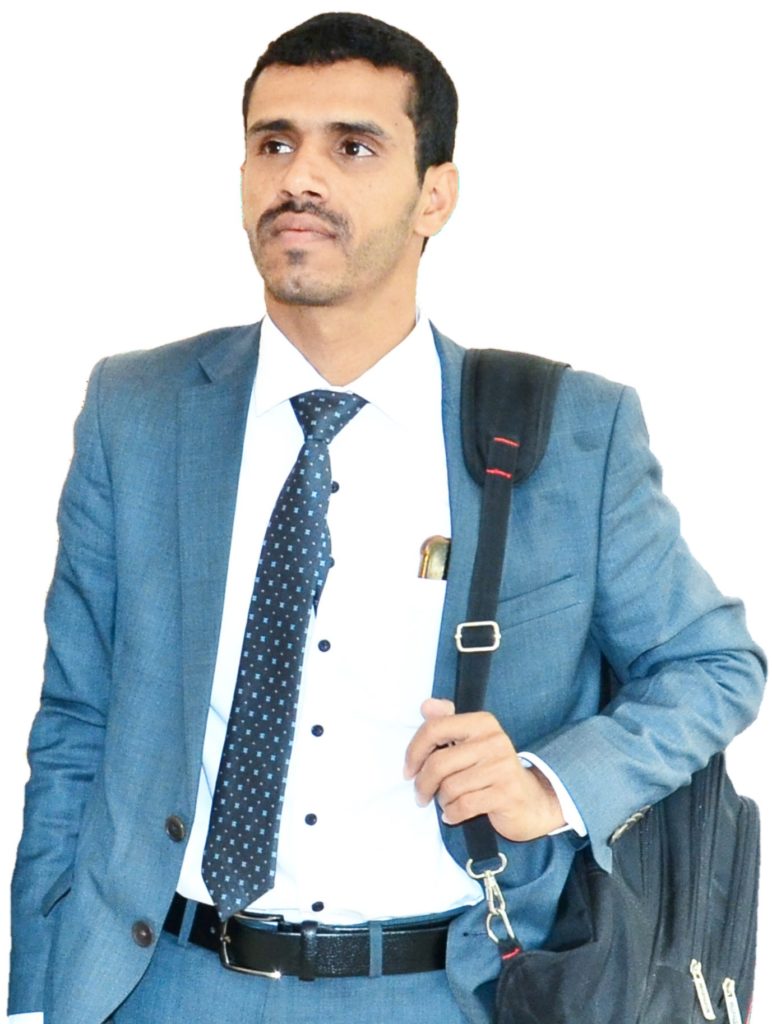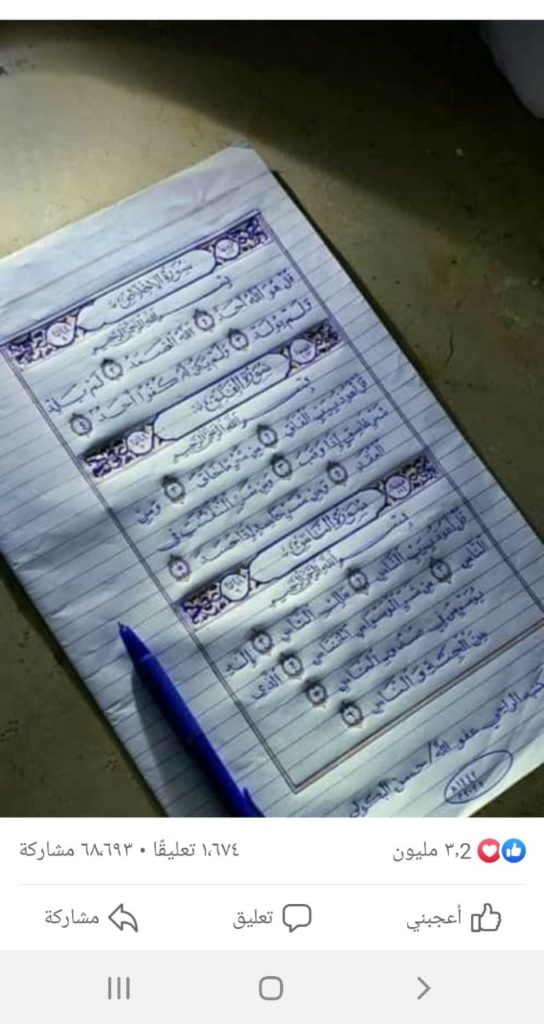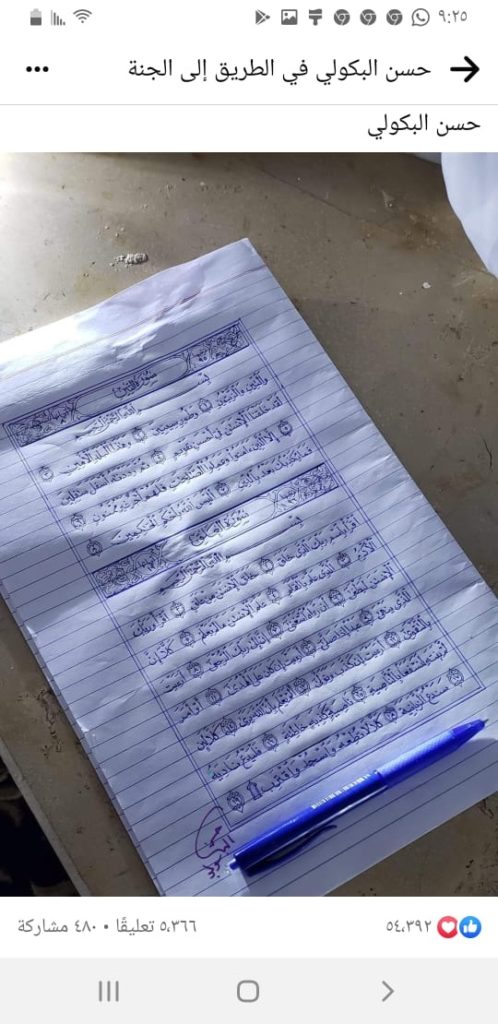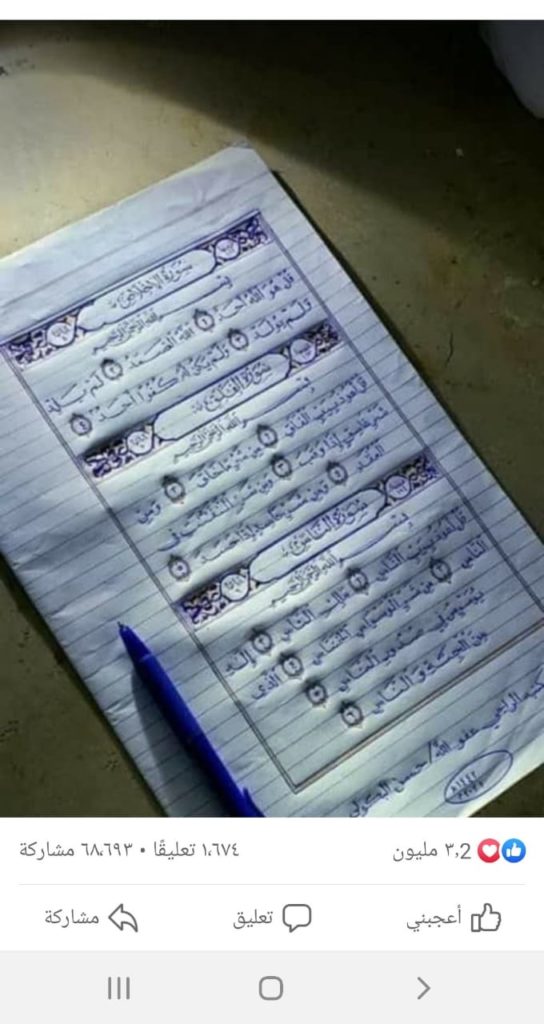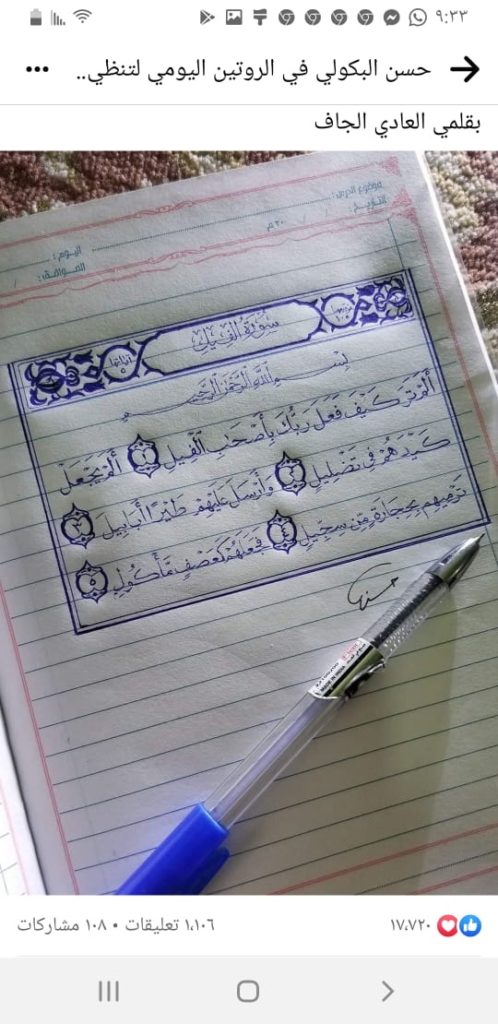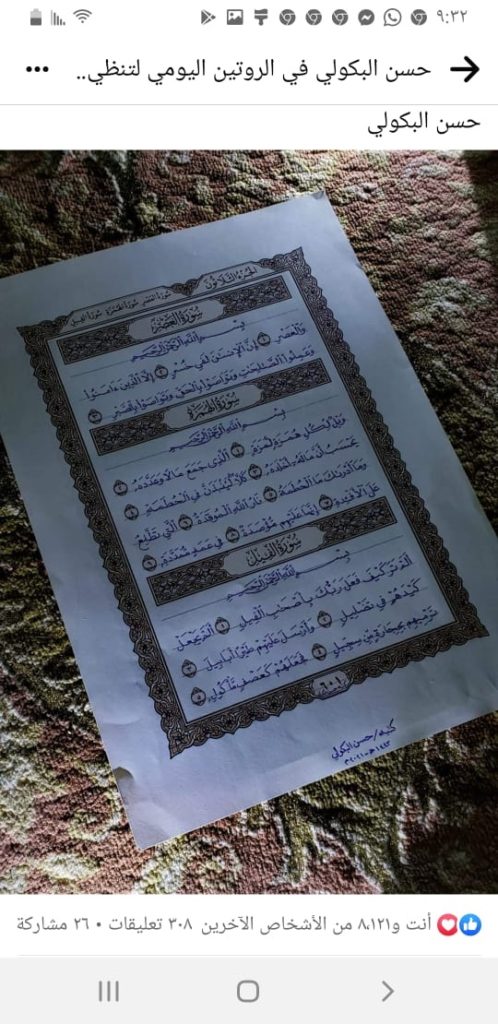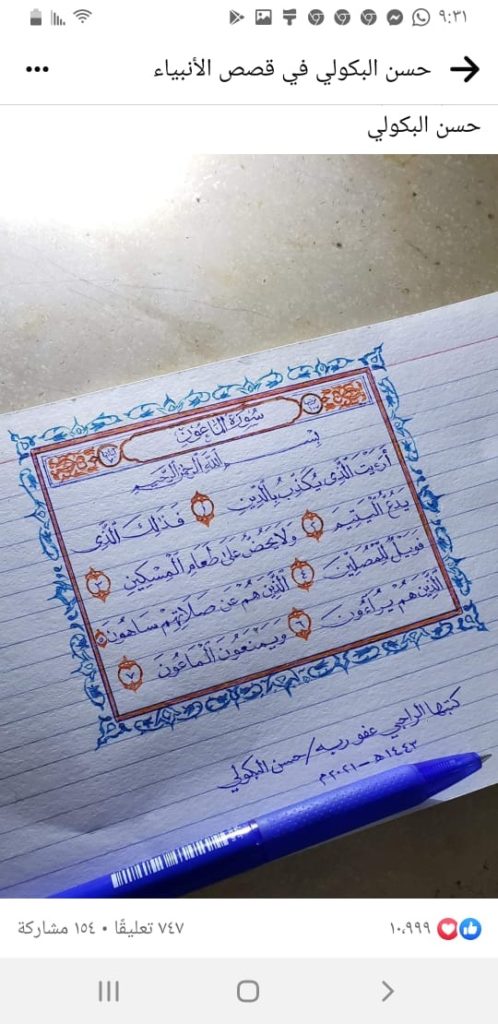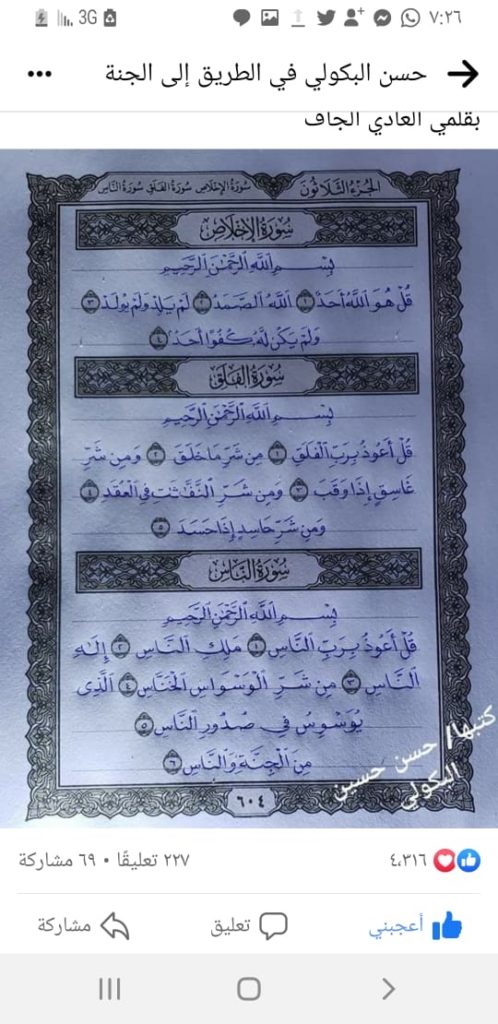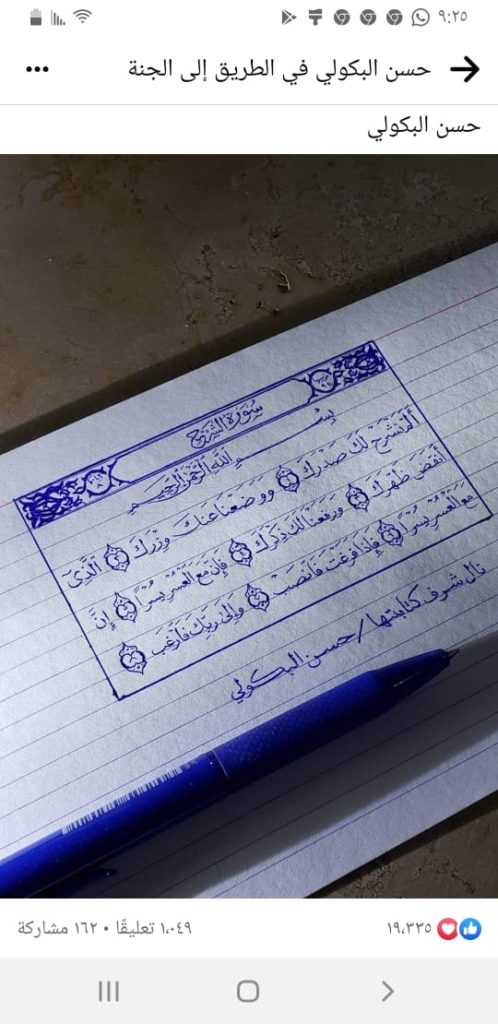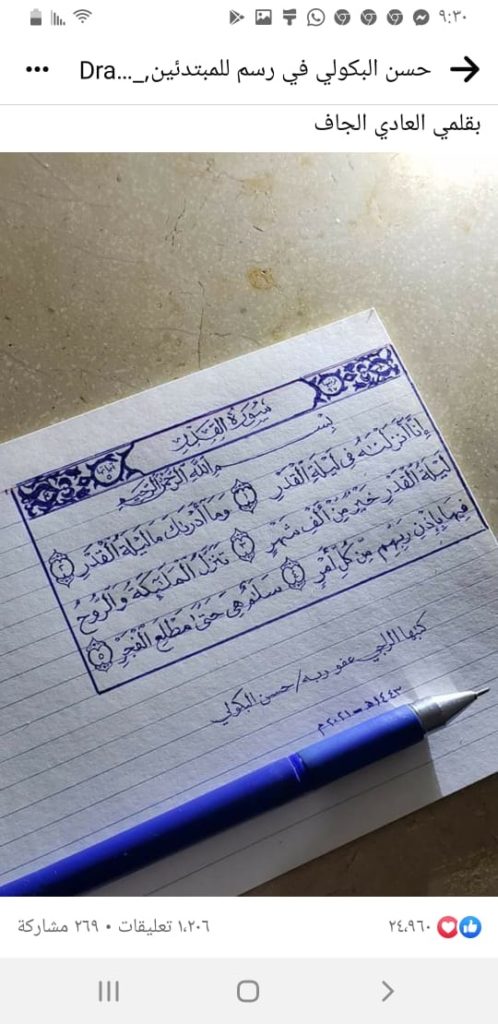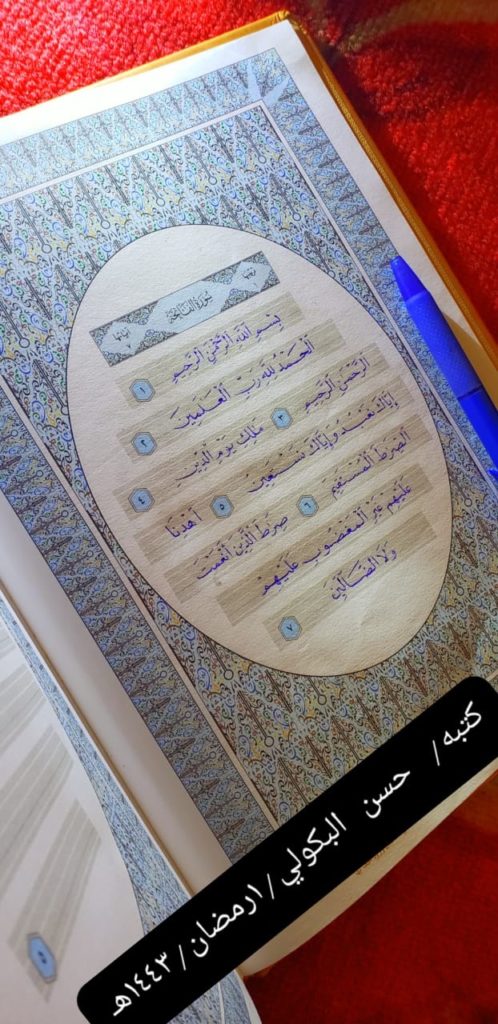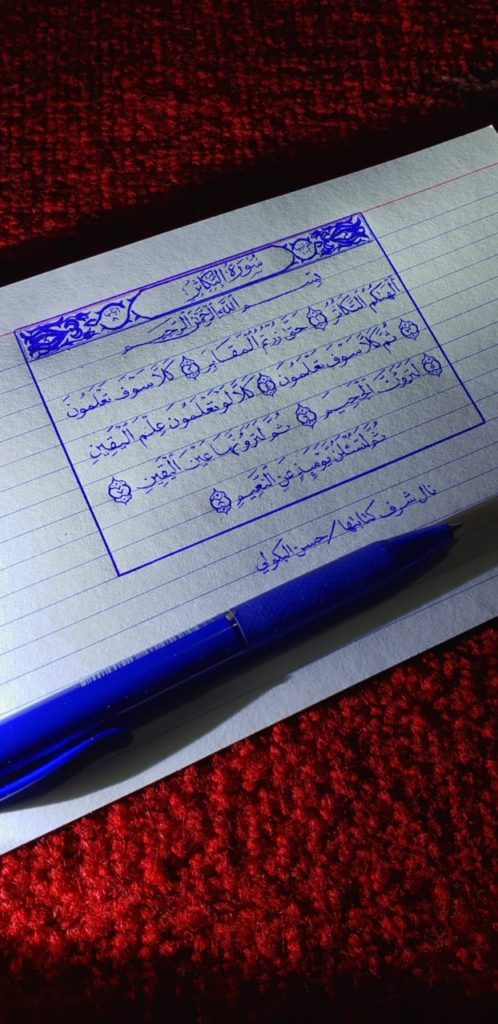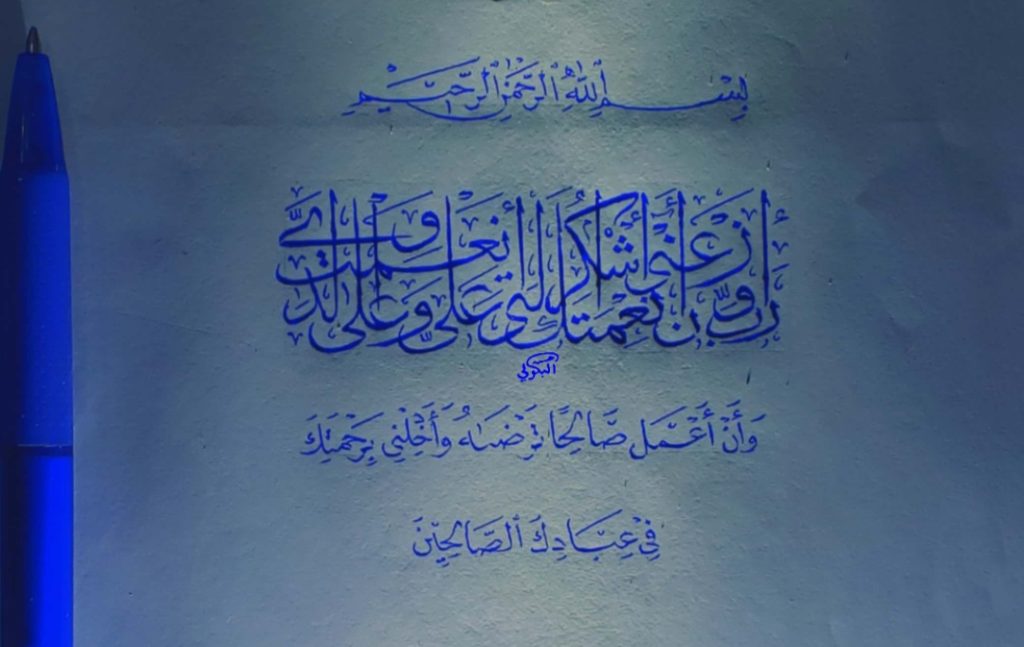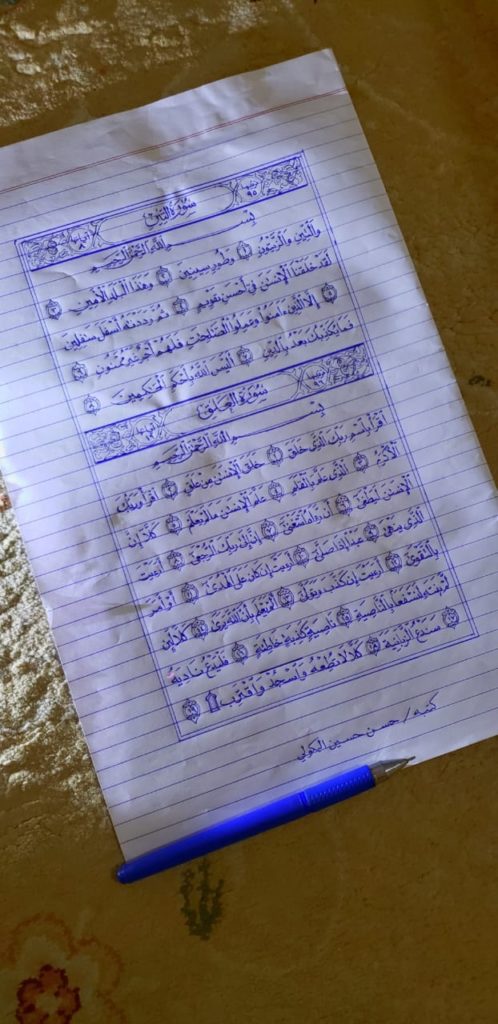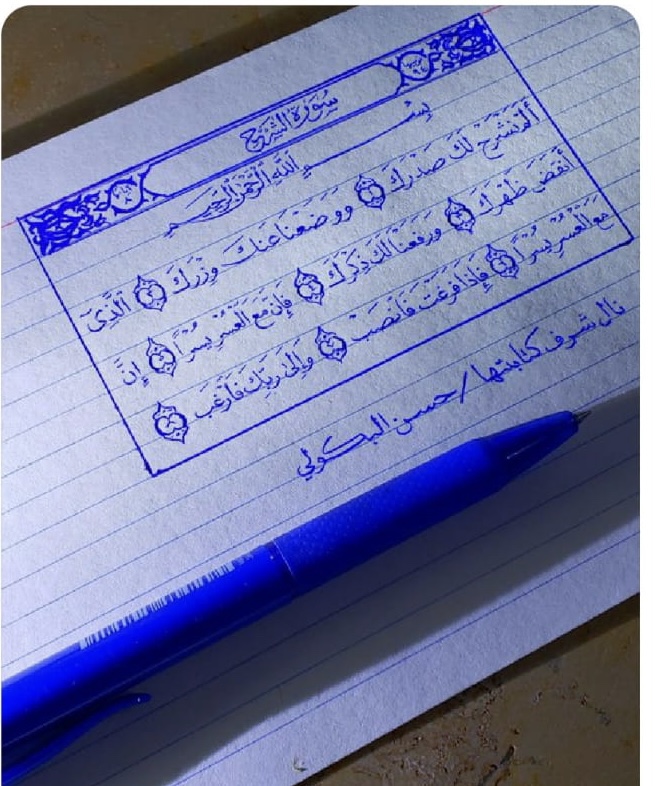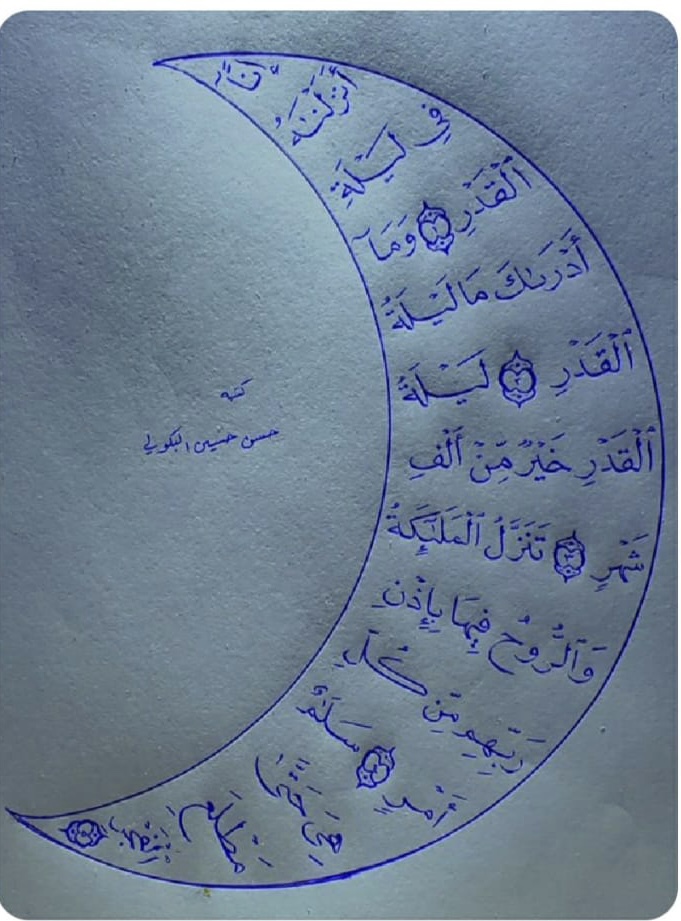“Calligraphy is a visual art related to writing and its name originated from the word
(Collagri-(καλλιγραφία)
In Greek the meaning of visual art related to writing is the design and drawing of letters using a pen, ink brush or other writing tool.
The practice of contemporary calligraphy can be defined as “the art of giving shape to signs in an expressive, harmonious and skillful way”
Islamic calligraphy has evolved alongside Islam and the Arabic language. Since it is based on Arabic letters, some call it “Arabic calligraphy.” However, the term “Islamic calligraphy” is a more appropriate term because it encompasses all calligraphy works by Muslim calligraphers from various national cultures, such as Persian or Ottoman calligraphy, and from Andalusia in medieval Spain as well as the prosperity of its period in China .
Islamic calligraphy is associated with geometric Islamic art (arabesque) on the walls and ceilings of mosques as well as on paper or other materials.
Instead of remembering something related to the spoken word, Arabic calligraphy for Muslims is a visual expression of the highest art ever, the art of the spiritual world.
Having become ubiquitous printing from the fifteenth century and in modern times, the production of decorative manuscripts began in printing presses and publishing houses However, the rise of printing did not mean the end of Arabic calligraphy.
The clear distinction between handwriting and more detailed forms of letters and texts began to make its way into manuscripts and books at the beginning of the sixteenth century.
Arabic calligraphy has continued to flourish as we find it today in the forms of wedding invitations and event invitations, font design and printing, original handwritten logo design, religious art, advertising, graphic design, costly calligraphy art, etc.
Calligraphers use ink brushes of various sizes and materials, and the main tools of calligraphers are pen and brush. Or calligraphy pens that are written with granules may be flat, round or pointed.
And for some decorative purposes, multi-gnawing pens can be used – steel brushes. However, works were also created using felt pens and ballpoint pens as an example produced by calligraphy artist interviewee.
Although these works do not use fonts at certain angles. There are some font styles, such as Gothic writing, that require a cube pen.
During our search for this softening Islamic art among Arab youth today and the extent of their interest in its learning and future, attracted our curiosity one of the Arab Artist from the State of Yemen in Arabia who had caught the eye and amazed many in social media with the splendor and beauty of his wonderful line with his ordinary dry pen, where he wrote a lot of paintings of verses and surahs of the Holy Quran, with his wonderful simplified drawings using only the dry ink pen that attracted the attention of social media users from Arabs and even from several other countries.
When we contacted him, the surprise was that he was one of the Arab symbols in Arabic calligraphy, the brilliant calligrapher and creator from Yemeni Dr. Hassan Hussein Al-Bakouli.
We begged him to have a dialogue with him about this ancient art that is stallabic in the Arab world and in his country, and he answered us with a welcome and told us that he already has questions and journalistic answers prepared in advance because of the frequent repetition of them to him by the inquirers
So we asked him to give it to us and in a moment he sent it to us and it actually included many of what we were going to ask,
We post it here as part of our lengthy conversation with him via social media messages, including our few other questions to him at the end of the interview”.
Interviewed by: Hatem Al Madani
- Dr. Hassan, tell us how your beginnings were in learning calligraphy?.
In the name of Allah, the Most Merciful, the Most Merciful, I first of all thank you for conducting this dialogue, which we hope will bear fruit and benefit many students and lovers of Arabic calligraphy.
As for my first beginnings in learning the skill of Arabic calligraphy, it was from a young age, I used to write a lot of paintings and draw some formations, and I preferred the copy font over other fonts, and at this stage I preferred to write with the cut pen and rarely use the ordinary dry pen in writing some paintings, and I worked to strengthen this talent that God gave me continuously, especially in this year where I intensified the practice and practice of handwriting and thank God the results were fruitful I was able to write a lot of paintings of verses and surahs of the Holy Qur’an, and I was able to decorate the footnotes of the Qur’anic surahs, and now it is the best script of transcription and then comes the rest of the Arabic fonts, this is for me personally, as I prefer now to write with the ordinary dry pen, and I rarely write with the cut pen, meaning unlike what I used to be.
- What are the reasons why you preferred to write with a regular dry pen in the recent period?
One of the reasons why I preferred to write with a dry ordinary pen is that this type of pen has become a companion and accompaniment to me more than before, and as it is known that ordinary dry pen rarely accompanies a person in the stages of childhood, but if a person reaches the level of university education, this type of pens is often inherent to him; and because this type of pen has become inherent to me, I have exploited it to write a lot of paintings at any time and in Anywhere, and one of the reasons is also the splendor and beauty of Arabic calligraphy, which is written with a dry ordinary pen, the calligraphy with it is more beautiful than the calligraphy with cut pencils.
- Was there anyone who encouraged you to learn the skill of Arabic calligraphy?
Yes, he is the dear my father, may Allah protect him, in addition to my family members as well as many colleagues and friends, so these people had great credit after Allah the Almighty in encouraging me to master the skill of Arabic calligraphy with a regular dry pen.
- How can you write Arabic calligraphy with a dry plain pen even though this type of pen is not prepared primarily for writing Arabic calligraphy?
Yes, I tried to make it impossible to make the ordinary dry pen a pen with which Arabic fonts are written like cut pens, so the beginning was unsuccessful, but I tried again and again tirelessly until I reached some fruitful results, so I continued in this battle until I was able to write some letters individually, then came the second stage, in which I mastered writing all the letters individually, and then moved to the third stage, which is the stage of writing words. I practiced writing words over and over again until, thanks to Allah the Almighty, I was able to master the writing of Arabic calligraphy and the writing of sentences and texts with a regular dry pen.
- Do you have a specific time when you practice writing paintings?
At the beginning of learning calligraphy, I was setting a time to learn calligraphy, but recently I practice writing paintings in my spare time, hardly a day passes without I have written a number of paintings either for a complete Qur’anic surah or for some Qur’anic verses until I have something like an addiction to it, and I do not find more comfort and pleasure than staying for hours writing a Qur’anic surah and then decorating it.
- What advice do you give to anyone who wants to learn Arabic calligraphy based on your experience in this field?
Of course, learning the skill of Arabic calligraphy is not as difficult as some think, learning calligraphy is basically like learning anything skillful, and in learning the skill of calligraphy the learner must go through four basic stages:
Phase I: Observation
Anyone who wants to learn Arabic calligraphy must notice who does this skill so as to take some experience and benefit from him, and I advise anyone who wants to learn Arabic calligraphy to watch how the calligrapher holds the pen while writing, how the calligrapher writes the letters singular and how he writes the letters connected in the word, how the calligrapher moves the pen while writing the letters and so on, and if this is not possible That is, watching the calligrapher write, the learner has to observe manuscript paintings of masterful calligraphers and then focus on drawing letters and their shapes and measuring them in these paintings so that he knows how each of the letters formed, and I also advise the learner to choose one type of font and focus on it, this comes in the first stage which is the stage of observation.
Phase II: Experimentation
By experimentation, I mean that the learner takes the pen and tries to write letters singularly, then tries to write them connected to each other, and write them in single and connected words, and then tries to write some sentences and some complete texts, and all this is in the experimental stage.
Phase III: Practice
That is, the practice of writing letters singular several times and repeating it, preferably the learner repeats the writing of four letters several times and then moves to write four more letters several times and so on until the learner finishes writing all the letters, and then moves to write words and repeats it several times, then moves to the practice of writing sentences and texts and repeats their writing, and all this comes in practice, preferably the learner sets a time allocated on a daily basis to practice writing.
Stage IV: Mastery
After practice, the learner reaches the stage of mastery, that is, mastery of writing letters individually, then mastering the writing of letters connected in words, and then mastering the writing of sentences and texts, and this is considered the last stage in which the calligraphy learner reaches the mastery of this skill, but some learners thanks to Allah the Almighty may move to a larger stage than the fourth stage Faisal to something called creativity and increase beauty beauty and bring new things to the world of Arabic calligraphy that no one else has preceded him in.
- It is noticed through your posts on social media that you write what looks like an interpretation of the Qur’anic verses that you are writing, so do you have a sale in the field of exegesis science?
Although my specialization at the master’s and doctoral levels is interpretation and the sciences of the Qur’an and I have backgrounds on the concept of the science of exegesis and its origins and rules, I am not sure to say that what I write of the explanation of the Qur’anic verses that I write is an interpretation of them, because we are just students of science and nothing more, and what I write is a simple clarification of the meaning of the Qur’anic verse and bring it closer to the reader’s mind, and try to link it to reality to show the realistic vitality of the verses of the Holy Quran , so I try as much as possible to benefit The reader of the form of writing the verse understands its content.
- Tell us what are your ambitions and upcoming projects?
The most important ambitions are many, if the hopefully possibilities are available, I will open a center for teaching Arabic calligraphy to allow those wishing to learn the skill of Arabic calligraphy, and through it will also attract and contain talented people in the field of Arabic calligraphy and work to develop and enhance this talent for them.
As for the upcoming projects, the most important of which is the project of writing the Holy Quran with a regular dry pen arranged verses and surahs, as well as activating distance education by providing the most important theoretical and applied lessons on how to learn to write Arabic calligraphy on social networking sites.
- Q: Tell us about the historical or modern monuments that happy Yemen has that express this art?
The ancient Yemenis had a large share in the art of Arabic calligraphy, and this is evidenced by the presence of many handmade manuscripts, the most important of which are manuscripts of the Holy Quran, where there are many numbers of Qurans written by Yemeni calligraphers in different types of Arabic calligraphy, especially the two lines of copying and third, and they decorated these Qurans with beautiful shapes and colors that delight the viewer, and then Yemenis passed on this art generation after generation to our time today, where there are many Yemeni calligraphers who stood out in this art, and received Many of them are the first places in international competitions and forums
- Q: Through your communication on social media, what age groups have you seen interest in this art from?
Through my communication in social media, I found all age groups interested in this art, and inclined to it greatly.
- Q: Other than the verses of the wise male or the Holy Qur’an, do you have other lines that express something modern, landmarks or different symbols?
Yes, there is a relationship between calligraphy and remembering, the more senses during learning, the faster it is to memorize the object to be learned, and to remember and retrieve it is easier
- Q: Have you communicated with foreign parties outside the Arab world interested in this sedative art?
Many people interested in Arabic calligraphy contacted me, whether from Arab countries or from outside Arab countries such as Islamic and non-Islamic countries
- A final word you direct to your homeland and your compatriots in the ‘happy Yemen’
Words cannot describe my love for my homeland and my compatriots, the homeland comes after the love of God and His Messenger, how not and it is the place where we lived and grew up in its arms, no matter how deep the wounds of our beloved homeland may be due to the current events, but it will remain our identity that we are proud of, no matter what we say and whatever we write about the right of the homeland, we will not deny it its right, and it is his right to work for him and for him with all honesty , and to preserve its gains, the homeland is like the house that shelters its owner, God save us Our homeland and make it safe and stable.
Thank you very much to the Yemeni calligrapher and creator Dr. Hassan Hussein Al-Bakouli for giving us an opportunity from his precious time to have this positive and fruitful dialogue, and God willing we will have another meeting with him in the face of the days
